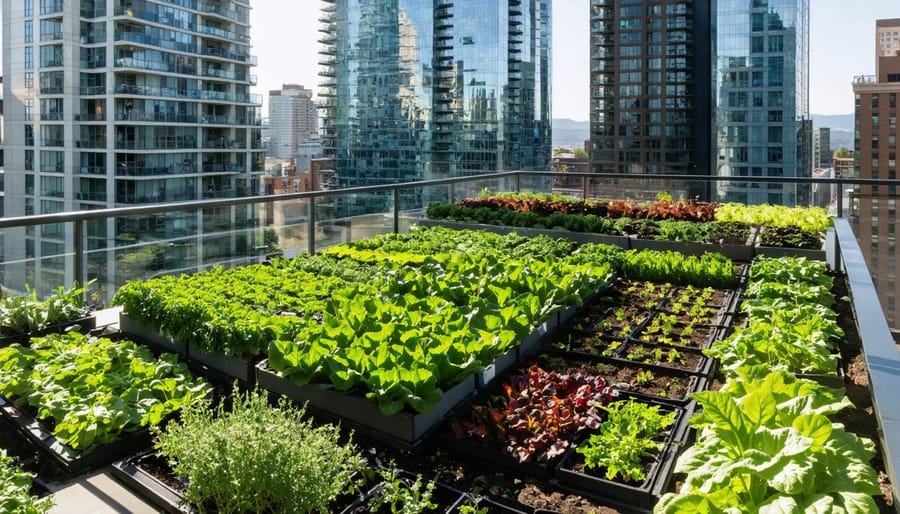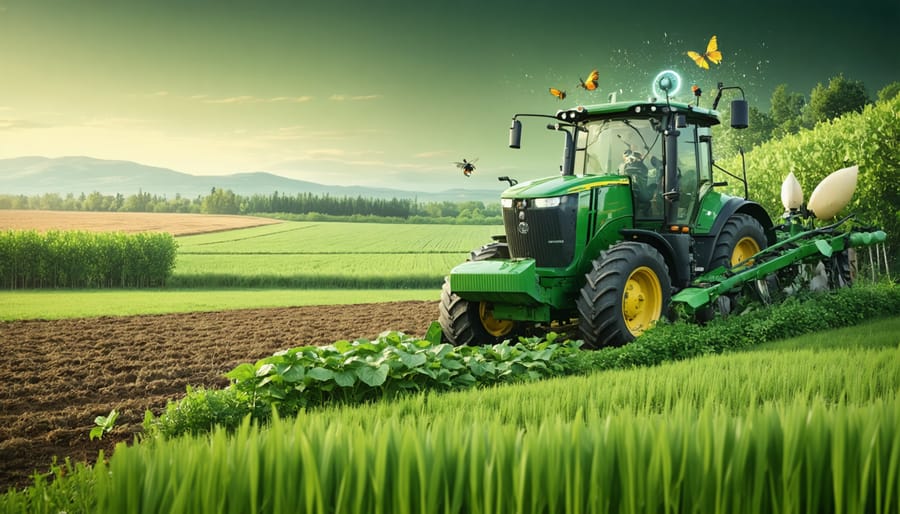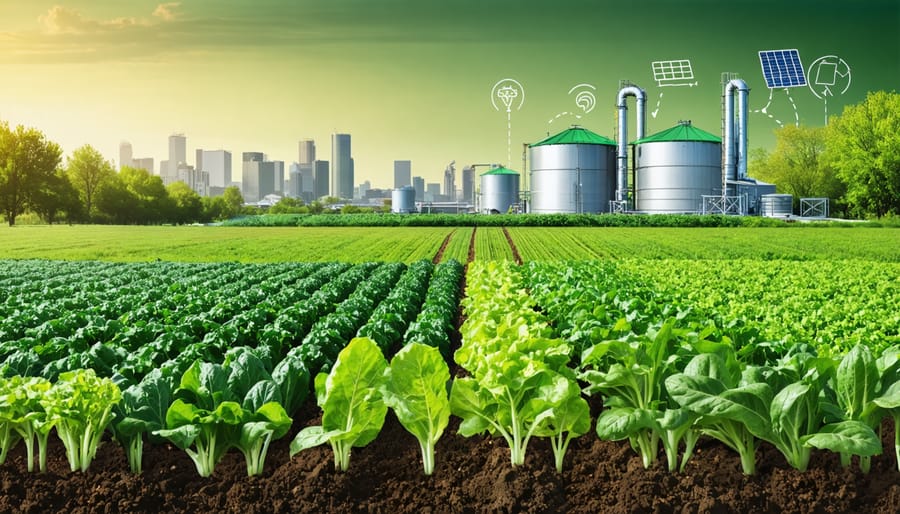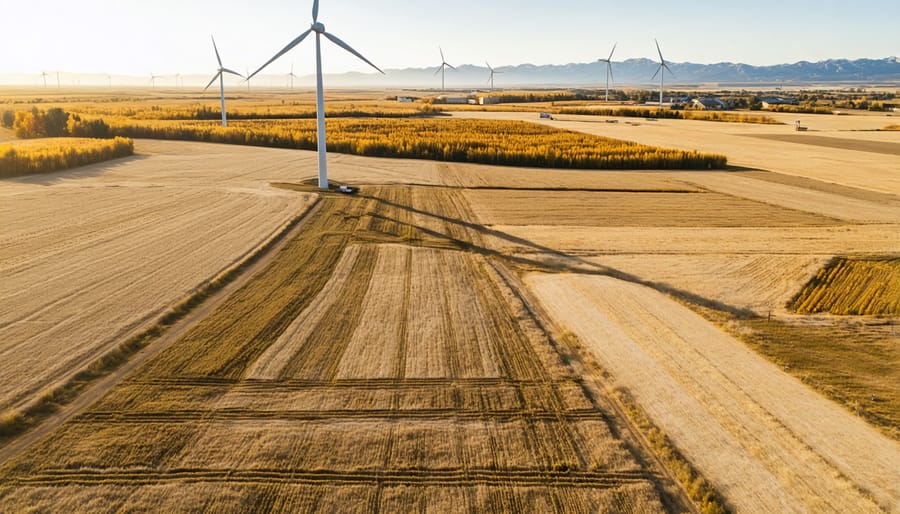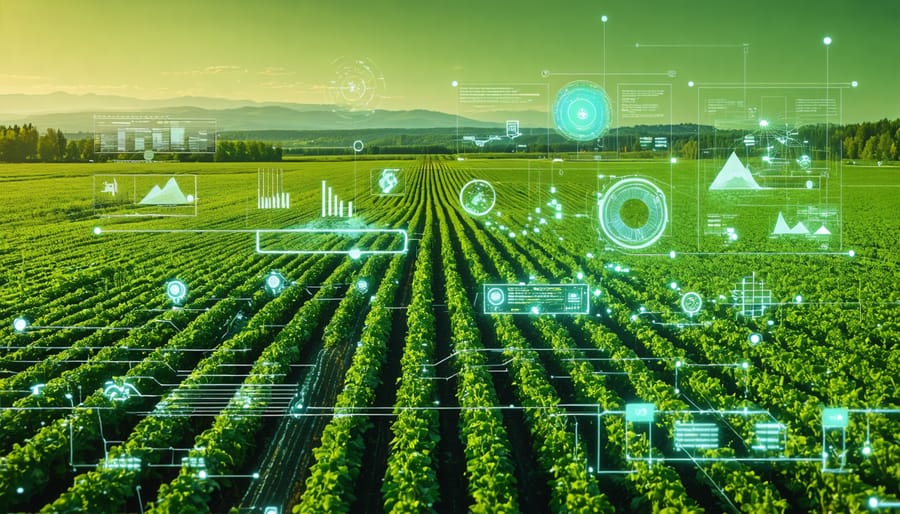Innovative agriculture is revolutionizing how we feed the world while protecting our planet. From organic farming benefits like improved soil health and biodiversity to precision agriculture technologies that optimize inputs, creative solutions are making food production more sustainable and efficient than ever. Groundbreaking approaches like vertical farming, regenerative practices, and smart irrigation systems demonstrate the immense potential to nourish growing populations with a lighter environmental footprint. These inspiring examples showcase how human ingenuity, coupled with respect for natural systems, can transform agriculture to build a more abundant and resilient future. As we face mounting challenges, from climate change to resource scarcity, embracing innovation in how we grow our food offers hope and a pathway forward. The time is ripe to explore how pioneering strategies could enhance your own farming operation and contribute to a greener, more bountiful world.
Precision Agriculture: Data-Driven Farming
Precision agriculture is revolutionizing the way farmers manage their crops and livestock in Alberta and beyond. By harnessing the power of advanced technologies like GPS, drones, and sensors, farmers can now collect and analyze vast amounts of data about their fields and animals. This data-driven approach enables them to optimize inputs, increase yields, and reduce their environmental footprint.
One example of precision ag in action is variable rate application (VRA). Using GPS-guided equipment, farmers can apply precise amounts of fertilizer, seed, or pesticides based on the specific needs of each part of their field. This not only saves resources and money but also minimizes runoff and pollution.
Drones equipped with high-resolution cameras and sensors are another game-changer. They allow farmers to quickly and efficiently monitor crop health, detect issues like pests or nutrient deficiencies, and even estimate yields. This bird’s-eye view provides valuable insights that would be impossible to gather on foot.
In livestock operations, precision ag tools like electronic ear tags and sensors can track individual animals’ health, behavior, and productivity. This enables farmers to identify and address issues early, optimize feeding and breeding programs, and improve animal welfare.
A shining example of precision ag’s potential is the Southern Alberta’s Discovery Farm in Alberta. This innovative research farm is using a wide range of technologies to demonstrate best practices and help local producers adopt them. From testing new crop varieties and management techniques to showcasing the latest ag tech, the Discovery Farm is at the forefront of data-driven, sustainable agriculture in the province.
As precision ag continues to evolve, it holds immense promise for making farming more efficient, productive, and environmentally friendly. By embracing these cutting-edge tools and techniques, Alberta’s farmers can stay competitive while stewarding the land for future generations.

Vertical Farming: Growing Up, Not Out
Vertical farming revolutionizes agriculture by growing crops in stacked layers within controlled environments. This innovative approach maximizes space efficiency, allowing for higher yields in smaller areas compared to traditional farming. By utilizing hydroponic systems and artificial lighting, vertical farms can precisely control nutrients, water, and light to optimize plant growth. These enclosed systems also reduce water usage, eliminate the need for pesticides, and enable year-round crop production regardless of external weather conditions.
One Canadian pioneer in vertical farming is Verticrop, based in Vancouver. Their state-of-the-art facility spans 5,574 square meters (60,000 square feet) and can produce up to 907 metric tons (2 million pounds) of leafy greens annually. Verticrop’s success demonstrates the potential for vertical farming to enhance food security and sustainability in urban areas across Canada.
As the demand for fresh, locally-grown produce continues to rise, vertical farming presents a promising solution for Canadian farmers looking to maximize their output while minimizing their environmental footprint. By embracing this cutting-edge technology, agricultural professionals can contribute to a more sustainable and resilient food system for generations to come.
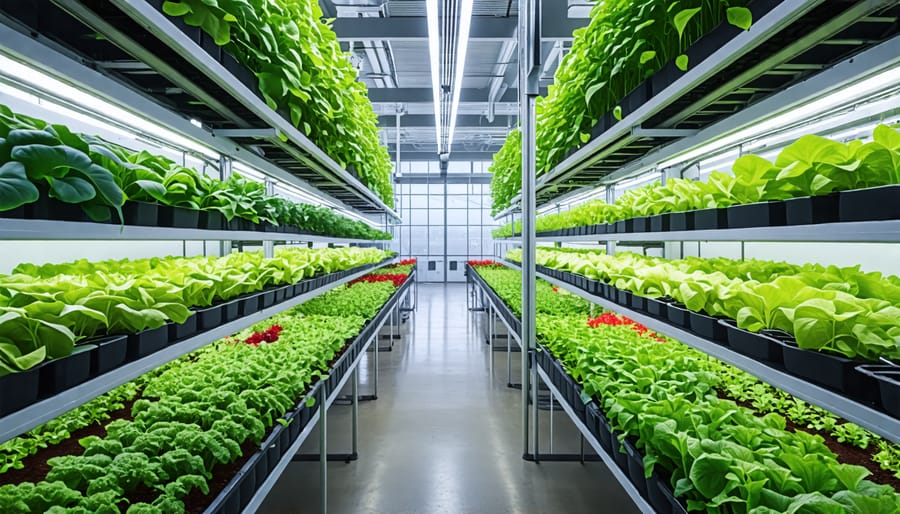
Robotic Automation: The Future of Farm Labor
The future of farming is here, and it’s powered by robotic automation. Emerging technologies are revolutionizing the way we plant, weed, and harvest crops, offering a solution to the persistent labor shortages faced by many Canadian farmers. From autonomous tractors that precisely sow seeds to robotic weeders that gently remove unwanted plants without disturbing the soil, these innovations are transforming the agricultural landscape.
One of the most exciting developments is the rise of robotic harvesters. These intelligent machines can delicately pluck ripe fruits and vegetables, working tirelessly around the clock to bring in the harvest. By combining computer vision, machine learning, and advanced robotics, they can identify and select only the finest produce, ensuring a higher quality yield. This not only improves efficiency but also reduces food waste and minimizes the need for manual labor.
As we embrace these cutting-edge tools, it’s essential to consider how they can be integrated with sustainable farming practices. For example, robotic weeders can be paired with organic no-till practices to maintain healthy soil while managing weed populations. By working in harmony with nature, these technologies have the potential to create a more resilient and productive agricultural system.
While some may fear that automation will replace human workers, the reality is that it can help farmers overcome the challenges of finding skilled labor. By freeing up time and resources, robotic technologies allow farmers to focus on the most critical aspects of their operations, from crop planning to marketing their products. As we move towards a more sustainable and efficient future, robotic automation is poised to play a crucial role in ensuring the viability of Canadian agriculture.
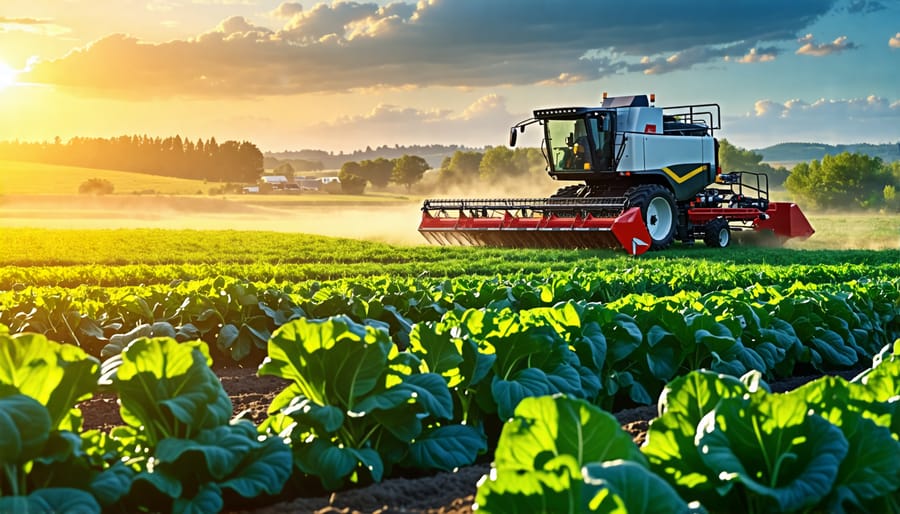
Regenerative Agriculture: Farming for Soil Health
Regenerative agriculture is an innovative approach to farming that prioritizes soil health, carbon sequestration, and farm resilience. By implementing practices such as cover cropping, composting, and mob grazing, farmers can improve soil structure, increase organic matter, and enhance microbial activity. Cover crops, planted between main crop cycles, protect the soil from erosion, suppress weeds, and add nutrients when incorporated into the soil. Composting transforms organic waste into a nutrient-rich soil amendment, reducing the need for synthetic fertilizers. Mob grazing involves rotating livestock through pastures in high-density, short-duration grazing periods, allowing for optimal plant recovery and manure distribution.
These regenerative practices have numerous benefits for both the environment and farm productivity. Healthy soils with increased organic matter have better water retention and infiltration, reducing the impact of droughts and floods. By sequestering atmospheric carbon in the soil, regenerative agriculture helps mitigate climate change. Additionally, diverse cover crops and well-managed grazing can enhance biodiversity, creating habitats for beneficial insects and wildlife.
A shining example of regenerative agriculture in action is [Alberta Farm], located in [Region], Alberta. The [Family Name] family has embraced regenerative practices, witnessing firsthand the transformative effects on their land and livelihood. By implementing a diverse cover crop mix and adaptive multi-paddock grazing, they have increased soil organic matter, improved forage quality, and reduced input costs. The [Family Name]’s success story serves as an inspiration for other Canadian farmers looking to adopt regenerative practices and build a more sustainable future for their farms and communities.
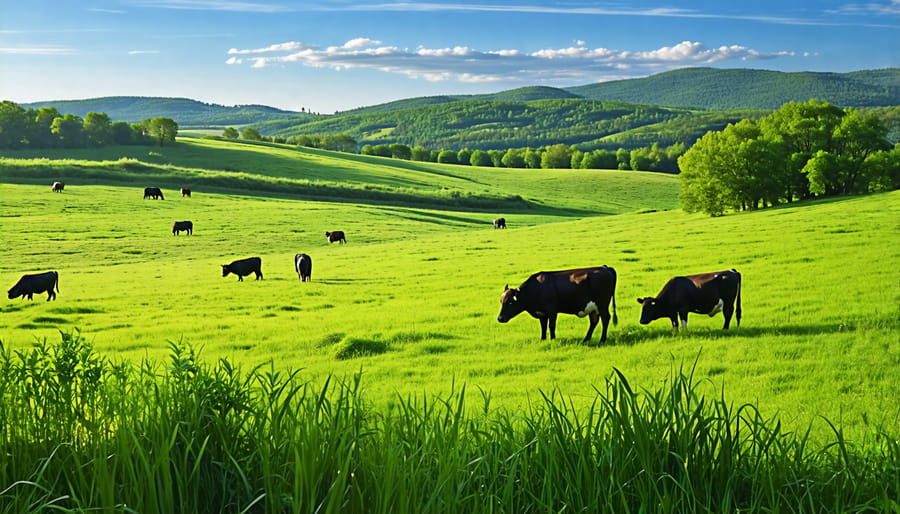
Agri-Food Technology: Connecting Farm to Fork
From advanced food processing techniques to innovative packaging solutions and traceability systems, agri-food technology is revolutionizing the journey from farm to fork. These cutting-edge innovations are not only enhancing efficiency and reducing waste but also adding value for both farmers and consumers alike.
In the realm of food processing, Canadian companies are leading the charge with state-of-the-art technologies that preserve the quality, nutritional value, and shelf life of agricultural products. For instance, high-pressure processing (HPP) is being used to extend the freshness of products without compromising taste or texture. This technology is particularly beneficial for farmers looking to expand their market reach and reduce spoilage.
Packaging innovations are also playing a crucial role in connecting farm to fork. Smart packaging, which utilizes sensors and indicators to monitor food quality and safety, is helping to minimize waste and ensure that products reach consumers in optimal condition. Canadian start-ups are at the forefront of developing biodegradable and compostable packaging materials, aligning with the growing demand for sustainable solutions.
Traceability is another key aspect of agri-food technology, enabling consumers to track the origin and journey of their food from farm to plate. Blockchain-based traceability systems, such as those being implemented by Alberta-based companies, provide transparency and foster trust between producers and consumers. By leveraging these technologies, farmers can showcase their commitment to quality, sustainability, and climate-friendly farming practices.
As the agri-food industry continues to evolve, the adoption of these innovative technologies will be crucial for Canadian farmers looking to remain competitive and meet the changing demands of consumers. By embracing the power of agri-food technology, farmers can not only add value to their products but also contribute to a more sustainable and transparent food system.
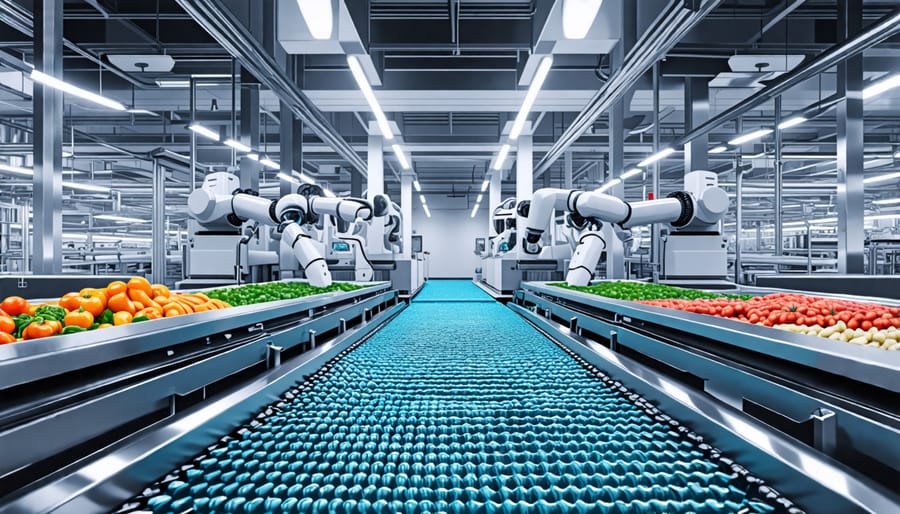
Conclusion
Agriculture innovation holds immense potential to transform the Canadian farming landscape, particularly in regions like Alberta. By embracing cutting-edge technologies and sustainable practices, farmers can enhance productivity, profitability, and environmental stewardship. The case studies and expert insights shared in this article demonstrate the real-world benefits of ag innovation, from precision agriculture to regenerative farming techniques.
As we look to the future, it’s clear that adopting these innovations will be key to maintaining Canada’s position as a global agricultural leader. We encourage readers to further explore the technologies and practices discussed here, and to consider how they might implement them on their own operations. By staying informed and open to new ideas, Alberta’s farmers can build a more resilient, sustainable, and prosperous agricultural community.
The outlook for Canadian agriculture is bright, and with continued collaboration, knowledge-sharing, and a willingness to innovate, we can create a thriving industry that benefits farmers, consumers, and the environment alike. Together, let’s embrace the transformative power of ag innovation and build a future we can all be proud of.


